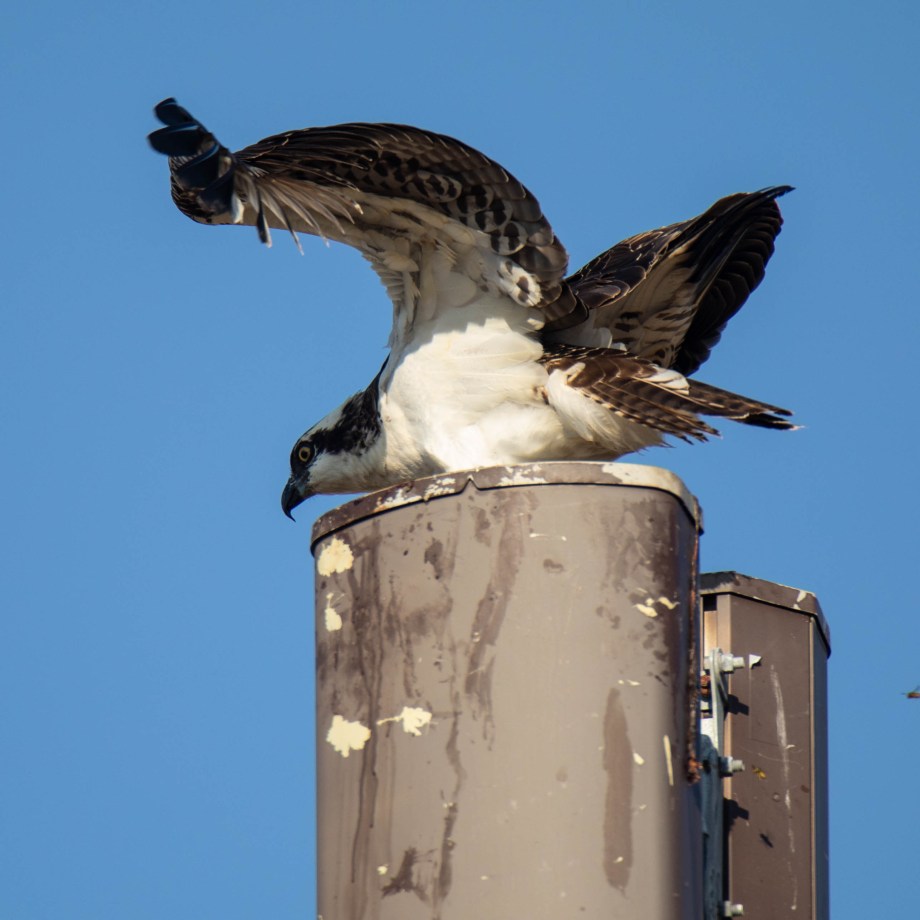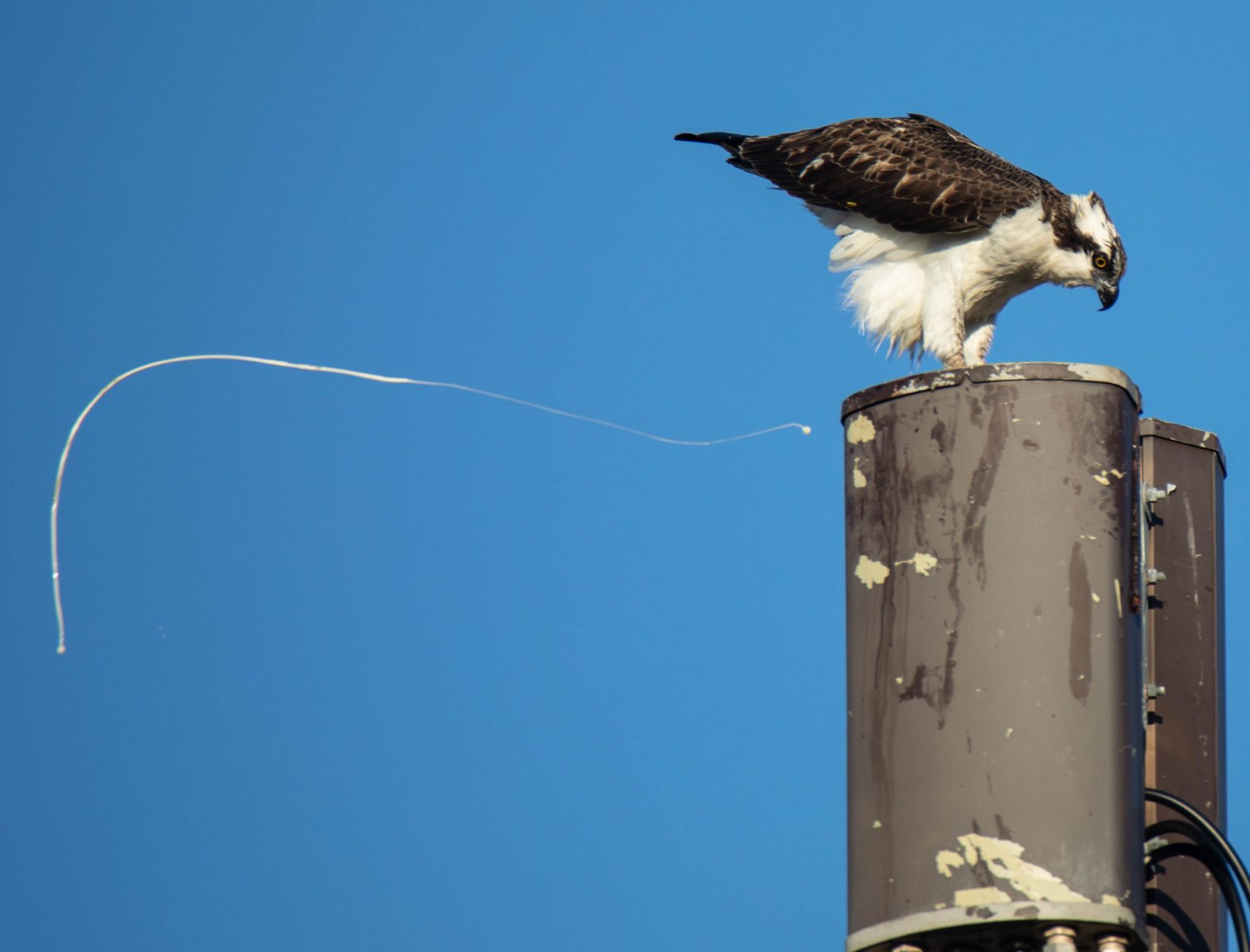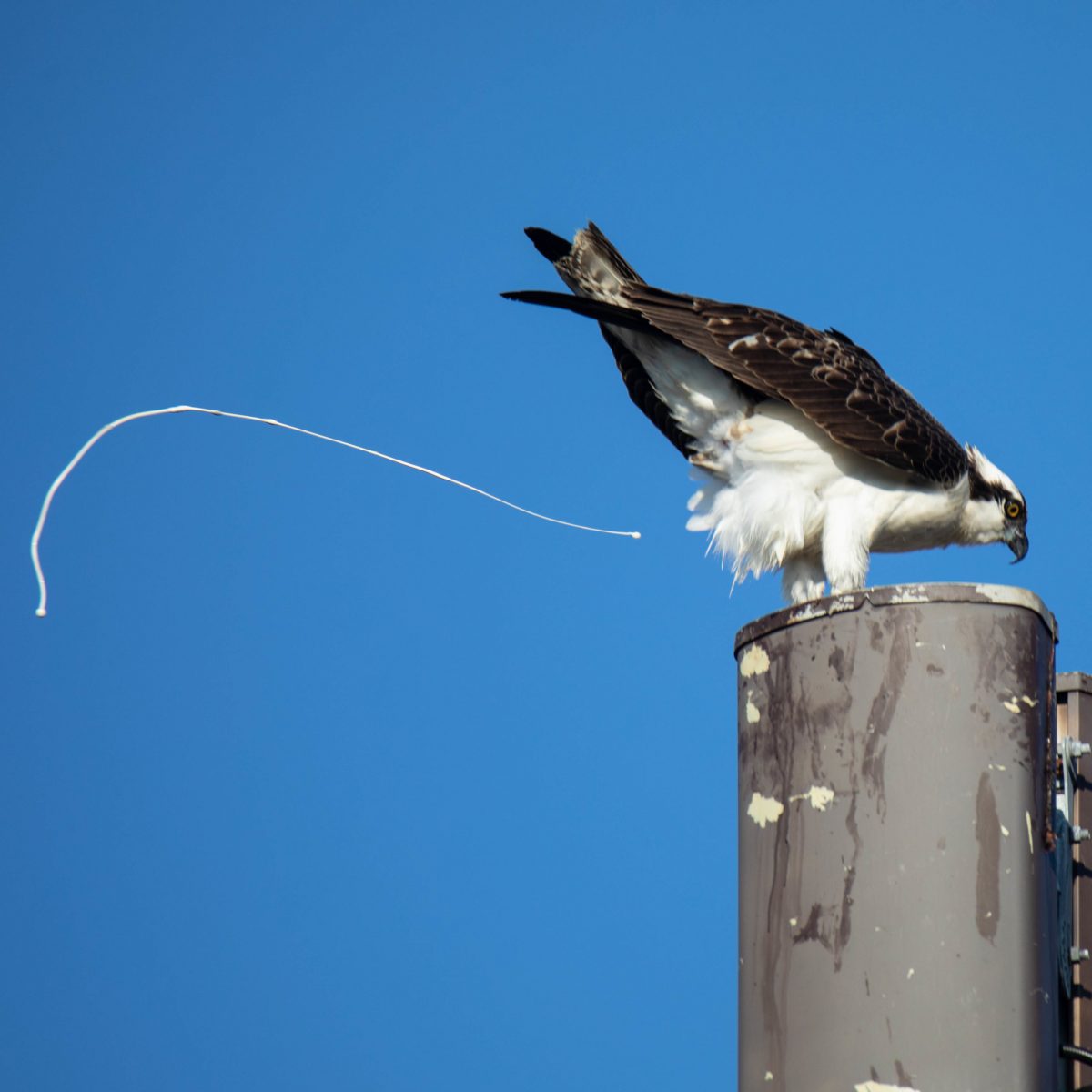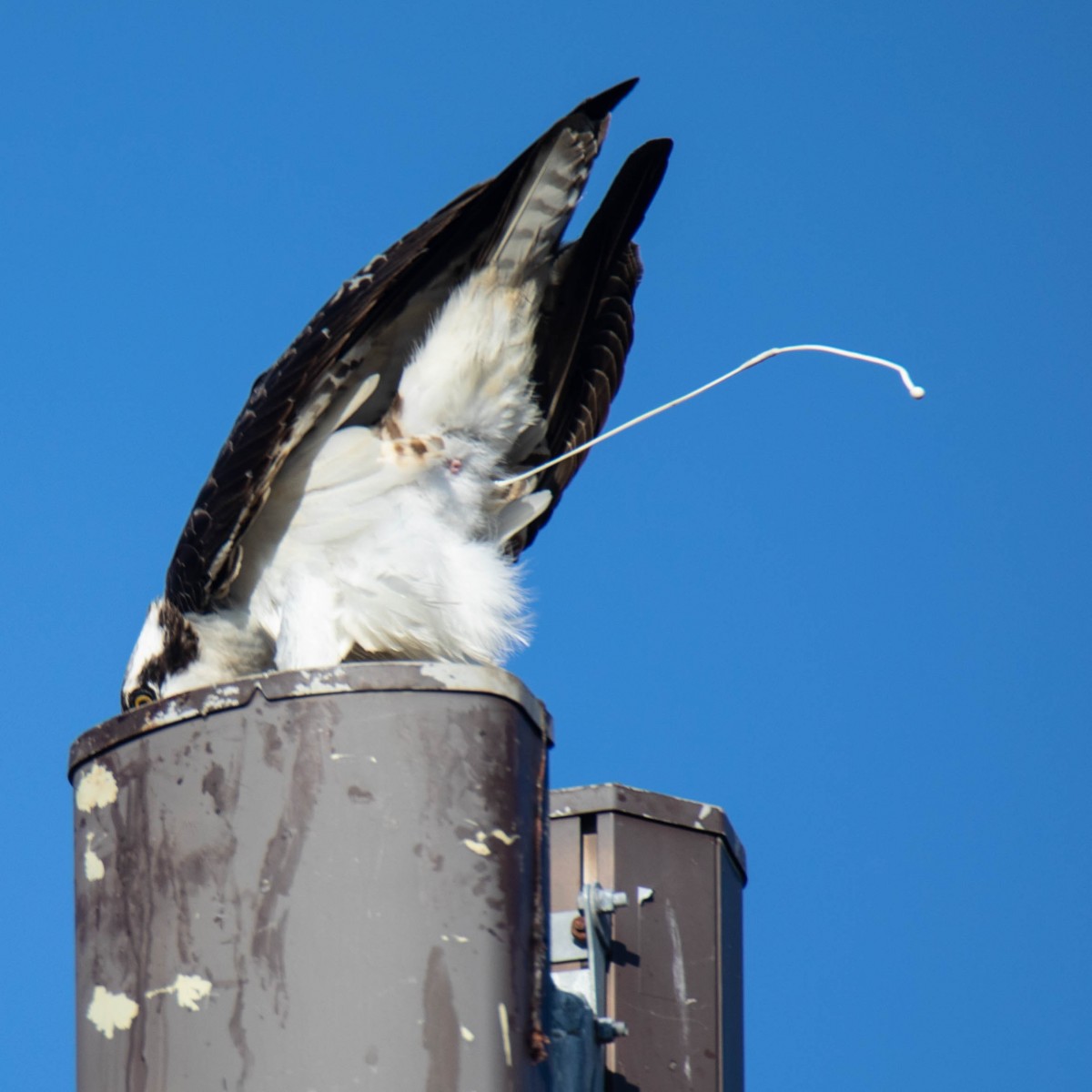And ended with a double banded Osprey.
A few weeks ago, Katherine and I were birding at Antonelli Pond (yes, again!). This was around the time when birders were still looking for an Eastern Kingbird.
Another birder walked up to me and we got to talking about banded birds. He mentioned that he was a bat biologist who tags bats via injection! Very cool. (To learn more about passive integrated transponder tagging, check out this site.)
When I mentioned the number of banded birds I’d seen around Antonelli, the birder/biologist thought perhaps University of California Santa Cruz was tagging birds. We talked some more and then I went off to find Katherine.
Katherine saw me approaching and motioned me to come forward, but quietly. When I reached her, she pointed toward a bush. “Common Yellowthroats in there.”
Soon, I saw one, too.

It wasn’t until I downloaded the pictures that I saw the band on the Yellowthroat’s leg. Not counting California Condors, I’ve seen about eight or ten banded birds in the 2-1/2 years I’ve been photographing birds. What a coincidence that I’d just been talking to the bat biologist about banding birds and then I see one!
Remembering what the biologist had said about UCSC possibly banding birds, I Googled that. I found the UCSC Predatory Bird Research Group. They band predators, especially Peregrine Falcons.
Wow. I had never even thought about banded raptors even though I’d seen tagged Condors.
Two days later, Katherine and I were driving to Año Nuevo Cascade Creek Trail to bird and enjoy the beach. As we neared the trailhead, we passed a large bird on a pole. I knew it wasn’t a Red-tailed or Red-shouldered Hawk, but thought perhaps it was a Peregrine Falcon.
Once we parked, I walked back about 1/4 mile to see if the bird was still there. It was.

A beautiful Osprey perched on the pole. I decided to watch it to see if I could get a picture of it flying off. After looking around for a few minutes, the Osprey revealed what he was doing up there…

It was breakfast time.
Look closely and you’ll see something that I didn’t notice for the entire forty-five minutes that I photographed this Osprey as I waited for it to take off. On the bird’s left leg is a plastic band. (As usual, I never even noticed the band until I reviewed my downloaded photos.)
What else was the Osprey doing during that forty-five minutes? I think you can guess…
My arms were getting tired of holding up the camera, but I didn’t want to miss the shot of the Osprey taking flight. After I’d spent thirty minutes, I was determined to wait the Osprey out. At thirty-seven minutes, the Osprey teased me by turning around on his perch.

Finally, my long wait was rewarded…

(Yeah, even with this view, I never noticed the bands on the Osprey’s legs!)
It seems to me that with the amount of time I invested in it, the Osprey could at least have flown toward me! 😛 Even flying off to either side would have been a nice picture. However, this is a great view of the bands.
After I saw that I could read one of the bands, I Googled “osprey banding.” I soon found a great article on the Golden Gate Audubon Society’s website written by Teresa Ely, the Banding Manager at the Golden Gate Raptor Observatory (a program of the Golden Gate National Parks Conservancy). I read about how and why they band birds. Very interesting information with great photos of banding birds. Definitely worth reading.
From there, I reported the banded Osprey (using the white on black “N1” that I could see) to the Bird Banding Laboratory at www.reportband.gov. That was a pretty detailed report and I could see all the different types of tags and locations on a bird that they could be found.
I received an email that day from the U.S. Geological Survey confirming my report. It also said that there are two possible responses to the report:
“1) We will be able to match the marker to an individual bird (by leg band number), and enter your sighting information into our database, producing a certificate that will give you all the banding information along with your sighting information.
2) We will be able to match the marker to a bander, but not an individual bird, in which case we will contact the bander asking him/her to explain the nature of the project and what they have learned from the marking.”
I received that email on September 8, 2021. I was advised that the process to receive more information about this banded Osprey may take a long while. I’ll provide an update to this post when I get more information.
UPDATE: On 10/13/2021, I received a email with a Certificate of Appreciation for reporting the Osprey! This Osprey was banded on April 29, 2021 (when it was to young to fly!) in Los Angeles County. Eighteen weeks later, it was successfully hunting in San Mateo County — a distance of about 350 miles.
Dr. Peter H. Bloom banded this Osprey. I read more about him here. He works for Bloom Biological, Inc., “providing biological consulting services for a wide range of industries.” You can read more here.




I agree, the Osprey could have given you a fabulous front take-off, with a wink even, lol. Glad you were able to get the banded shots. Love the little yellow bird too, so cute.
Thanks, Echo! Watch for an upcoming post about Moonglow Dairy where I’ll have a picture of a gull flying at me. No wink, though!